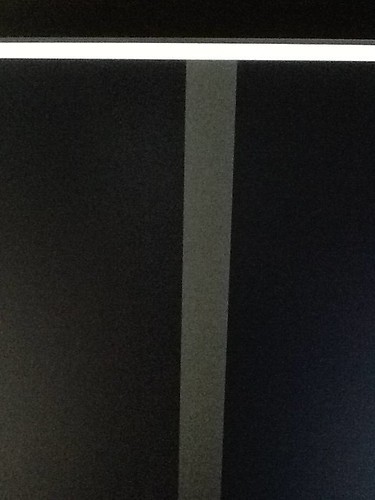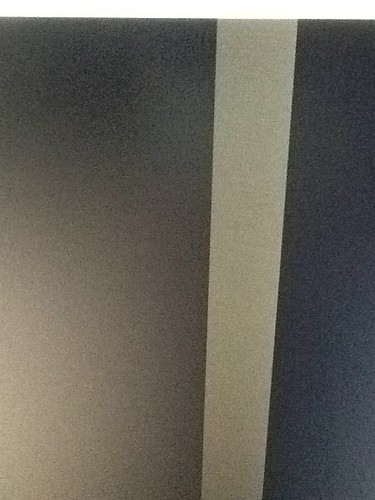I have a Dell U2312HM. Doing the pencil waving test, I see no strobe effect at any brightness - even 0% shows none. On my old Viewsonic VP201S IPS monitor, I see the strobe effect under 90% when I wave a pencil in front of it.
I took some pictures with my Ipad. I do not know the shutter speed so I cannot calculate the frequency but I was just doing it to see if it confirmed the pencil waving strobe test - and it did. I took 3 pictures of the white line test, at http://dl.dropbox.com/u/2564500/Pics/flicker_test.jpg , with each monitor at 0%, 50% and 90%.
In all three (see below) the Dell U2312HM showed no signs of on and off with it being a consistent white across the whole line blur. At first I was not sure if the Ipad was capturing it properly since I did not know the shutter speed. So I thought, maybe it does have strobe effect but the Ipad camera is not sensensitive enough or long enough shutter speed to capture it. That is why I did it on the Viewsonic, so I could see if it also showed a solid line. Result: the Viewsonic showed on-off breaks in the pictures taken. At all tested brightness settings of the Viewsonic, 0% 50%, and 90%, you can see on-off breaks in the streak . But using the same Ipad camera, the Dell showed no such on-off phases at any brightness setting I tested - even 0%.
Pictures
Viewsonic at 0% and 90%


Dell at 0%, 50% and 90%:



Does this mean the U2312HM does not use PWM to control brightness or uses a very high frequency?
I took some pictures with my Ipad. I do not know the shutter speed so I cannot calculate the frequency but I was just doing it to see if it confirmed the pencil waving strobe test - and it did. I took 3 pictures of the white line test, at http://dl.dropbox.com/u/2564500/Pics/flicker_test.jpg , with each monitor at 0%, 50% and 90%.
In all three (see below) the Dell U2312HM showed no signs of on and off with it being a consistent white across the whole line blur. At first I was not sure if the Ipad was capturing it properly since I did not know the shutter speed. So I thought, maybe it does have strobe effect but the Ipad camera is not sensensitive enough or long enough shutter speed to capture it. That is why I did it on the Viewsonic, so I could see if it also showed a solid line. Result: the Viewsonic showed on-off breaks in the pictures taken. At all tested brightness settings of the Viewsonic, 0% 50%, and 90%, you can see on-off breaks in the streak . But using the same Ipad camera, the Dell showed no such on-off phases at any brightness setting I tested - even 0%.
Pictures
Viewsonic at 0% and 90%


Dell at 0%, 50% and 90%:



Does this mean the U2312HM does not use PWM to control brightness or uses a very high frequency?
Last edited:
![[H]ard|Forum](/styles/hardforum/xenforo/logo_dark.png)